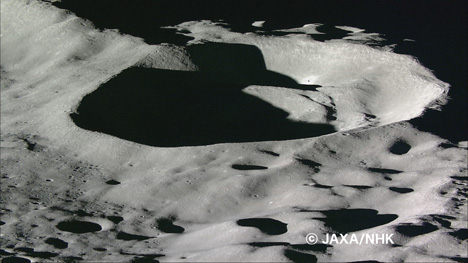
In an ambitious new project unveiled on April 27, an Osaka-area business group has vowed to put a humanoid robot on the moon by 2015.
The business group, known as SOHLA (Space Oriented Higashiosaka Leading Association), made headlines in January 2009 after their Maido-1 lightning observation microsatellite was launched into orbit. Their new project is to develop a bipedal humanoid robot -- named "Maido-kun" -- which can function in the harsh lunar environment. If all goes as planned, Maido-kun will be ready to travel to the moon in 2015.
SOHLA admits there are a number of obstacles to overcome -- most notably the astronomical development costs (now estimated at 1 billion yen, or $10.5 million) -- but they are optimistic about their pursuit and believe it can help stimulate the local economy by getting small and medium sized manufacturers involved in the development of space technology. At present, SOHLA consists of six local enterprises working in partnership with government-affiliated organizations such as the New Energy and Industrial Technology Development Organization (NEDO) and the Japan Aerospace Exploration Agency (JAXA).
In 2005, JAXA announced bold plans to send bipedal humanoid robots to the moon. However, after recognizing the numerous difficulties that the lunar landscape poses for two-legged humanoids, they decided it would be more feasible to send wheeled robots instead.
Wheels may be more practical than legs, but SOHLA board member Noriyuki Yoshida sees an advantage in robots that look like people. "Humanoid robots are glamorous, and they tend to get people fired up," he says. "We hope to develop a charming robot to fulfill the dream of going to space."
JAXA plans to send their first robot rover to the moon in or around 2015, and SOHLA hopes their Maido-kun humanoid will be able to hitch a ride on the same mission.
[Source: Yomiuri]


 The students began cooking with Nomura's jellyfish three years ago, after a NASA-designed food safety management system was installed at the school. In 2006, after the school developed a method for processing giant jellyfish into an edible powder, a local company began using it as an ingredient in their
The students began cooking with Nomura's jellyfish three years ago, after a NASA-designed food safety management system was installed at the school. In 2006, after the school developed a method for processing giant jellyfish into an edible powder, a local company began using it as an ingredient in their 









